
13 minute read
Outcome 2: increased access to female-friendly toilets and menstrual products
Out come 2
Women and girls have access to female-friendly toilets and affordable (biodegradable) sanitary napkins Outcome 2: increased access to female-friendly toilets and menstrual products This outcome is defined as: ‘women and girls have access to better menstrual health facilities at schools and affordable (biodegradable) sanitary pads.’ Access to female-friendly toilets and access to a range of menstrual products are key contributors to menstrual health.
Advertisement
School interventions in Netrokona > Budget mobilisation in schools
Who
DORP and Simavi
How
To improve or construct female-friendly toilets in schools, a budget mobilisation approach was used. DORP worked with school management committees (SMCs), headmasters, and teachers.
They engaged a student forum to mobilise funds from existing school budgets, to raise funds from parents and community stakeholders, and claim assistance from the school water and sanitation budget from local governments. SMCs and
BUDGET MOBILIZATION PROCESS IN RITU
Community & School Engagement Process to establish female-friendly WASH facilities in schools and communities with support of DORP.
1: School Management Committees and
Parents Committees
• Receive MH training + do assessment of WASH facilities
• Discuss findings + design action plans and budgets • Identify key public and private stakeholders • Raise awareness at schools and communities
• Prepare petition + submit to government stakeholders
2: Government stakeholders
• Receive training on MH + their role in budget allocation
• Receive petitions with action plans and budget • Approve proposed action plans and allocated budget • Lead on the design of the female-friendly toilets • Develops work plan and calls for tender
Construction of female-friendly toilets in schools and communities students organised in forums were empowered to use social accountability methods to voice their demands to union or district level government. At the same time, DORP raised awareness of local government representatives on the importance of female-friendly toilets and supported them in the budget allocation process. Our input in numbers: • The female-friendliness of toilets of 176 schools was assessed. • In Netrokona, 89 schools were engaged in budget mobilisation processes to produce female-friendly toilets. • Wall paintings with information on the importance of female-friendly toilets were created in 89 schools. • There were 178 refresher training sessions and follow-up meetings with school management committees, 16 follow-up meetings with local government stakeholders, and 2 follow-up meetings with district education officers. Output in numbers: • The student forums that were trained to monitor the status of the toilets completed a total of 320 checklists. • All of the 89 targeted schools produced femalefriendly toilets. • A total of 10.29 million BDT was raised for female-friendly toilets in schools: 4.34 million
BDT came from the local Education Engineering
Department, 2.8 million BDT from union and upazila parishads, 1.9 million BDT from those schools’ management fund and the rest was contributed by the Ritu programme (5%).
Total: 10.320.057 BDT
500.450
Departmet of Public Health Engineering
698.606
Ritu project (5%)
1.924.001
Schools management fund
4.340.000
Education Engineering Department
2.857.000
Union and Upizila Parishads (local Gov)
Wall painting that explains the importance of menstrual health for girls.
Head teacher, M. A. Hamid Junior High School ‘After seeing the wall-painting on menstruation on the wall near to the school toilets, a parent came to me. He wanted to know the reason why I allowed to have information about such a private topic written on walls. I invited him to my office and we talked about menstruation and the Ritu project. The man calmed down. After this meeting, I arranged several meetings with parents with the help of the trained teachers to inform them about menstruation. Now the parents of our students are very positive.’

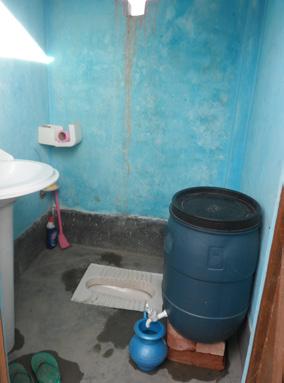
FEMALE-FRIENDLY TOILETS Following the JMP 12 standards, a female-friendly toilet should be an ‘improved’ toilet, this is a facility that hygienically separates human excreta from human contact. Furthermore, the toilets should be accessible for girls only, provide privacy, have a decent lock, and a light. For menstrual practices, the toilet should have soap and water inside and enough space to wash the body or cloth. It should also have a good waste management option. In the Ritu programme we chose to have covered bins inside the toilets.
Netrokona community interventions
> Budget mobilisation in communities in Netrokona
Who
Simavi and DORP
How
Similar to the process in schools, parents of 5,000 girls from 37 randomly selected schools were engaged in a budget mobilisation process. DORP
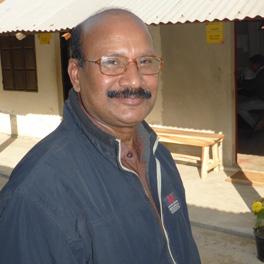
worked with groups of parents to allocate household budgets and claim budget funding from local governments through social accountability methods to voice their demands to union or district level government representatives. At the same time, local government representatives were informed about the importance of MHM-friendly toilets and were supported in the budget allocation process from their side. Our input in numbers: • The female-friendliness of toilets in 4,488 house • Female-friendly household toilets were installed in 37 communities which had developed action plans. • A total of 677 households received a 10% contribution from the Ritu programme. Output in numbers: • Some 855 households developed femalefriendly toilets.
Mr Ahmed Hossein, Programme Manager Ritu, DORP ‘The budget mobilisation in communities was the last activity in the sequence of Netrokona-level interventions. The regular process had to be adjusted because of the RCT (evaluation) to avoid overspill in other communities. This both limited the available time and complicated the process to access government funds. Moreover, we found that toilets were in very bad state and at the same time people lack the resources to invest in toilets. The sessions did motivate parents and a number of households were able to invest money from their savings. Others took out microcredit loans or sold assets such as cows. Some households found a middle way by investing in soap, a bin, and toilet cleaning materials to upgrade their slab toilets. However, a significant number of households were not able to finance an improved toilet. We were able to influence a shift in mindset and develop a good number of toilets, but to really make the process work it requires more time and the full engagement of communities and government.’
PRODUCTS – (NOT) A PRIORITY Menstrual products are an important component of menstrual practices and are often a key element or the focus of menstrual health interventions. The Ritu needs assessment 13 found that sanitary pads were often considered the ‘better’ option, but that for some respondents, the cost of sanitary pads was a barrier. It also concluded that there was a high availability of sanitary pads in the targeted areas. However, stigma, knowledge, and skills to properly use menstrual products were identified as a greater barrier towards menstrual health. This, combined with criteria such as likelihood of creating the desired impact, cost-effectiveness and potential for scale-up made us decide not to invest in access to sanitary pads as part of the Netrokona interventions. We did include messaging towards girls using the products of their choice, either a well-washed, dried cloth or (re-usable) sanitary pads, or other products. We learned from a previous menstrual health programme in India that spending money on sanitary pads is also a matter of making it a priority. Fathers were therefore motivated to support access to the product of their daughters’ choice. As part of the programme results, schools ensured availability of (emergency) menstrual products at school.
Contribution towards Outcome 2
Access to toilets in schools
When looking at student–toilet ratio, e.g. the number of students per toilet, the Ritu programme had a positive effect. The RCT showed a ratio of 38 girls per toilet in control communities, compared to 30 girls per toilet in the school intervention and 31 girls per toilet in the school plus community intervention. The data also pointed towards available toilets being more suitable to perform menstrual practices with
‘We have created a wave of change in our school, we can not stop.’ Md. Monjurul Haque, Head Teacher, Shimulati High School ‘We are changed now. We have created a wave of changing in our school. So, it is not possible for us to go back or to stop. Already I have discussed with the SMC and am taking all the necessary steps to maintain the female-friendly toilets for the girl students in my school.’

Picture of new toilet construction for the girls only at Nandipur Sonar Bangla High School (Code-B-6) Netrokona Sadar, dated 24.10.2018 a significant increase in the likelihood of having soap and a bin in the toilet. This is supported by DORP’s observations that school toilets are cleaner, soap, water, and bins are available, and sanitary pads are properly disposed of. DORP reports that 81 of the 89 schools have allocated between 3,600 and 12,000 BDT for the cleaning and maintenance of the toilets. The commitment of schools to maintain the toilets was expressed in the final meetings that DORP held during the extension period.
Access to toilets at home As part of the school plus community interventions, DORP engaged parents of girls in a budget mobilisation process to upgrade or build a female-friendly toilet at their homes. A total of 855 households installed female-friendly toilets. As a result, the RCT shows a significant increase in the likelihood that girls who received the additional community interventions have access to soap (25%), light (11%), and a clean toilet (21%). It is likely that this had a positive effect on girls’ menstrual practices and confidence to manage their menstruation at home.
Effect on menstrual practices As reported under outcome 1, we see an improvement in menstrual practices among girls. Findings from focus group discussions support the assumption that access to female-friendly toilets contributes to that. Girls mention that before the Ritu programme, they did not change their menstrual products when in school as there was no good place to do so. Girls report washing their cloth in school toilets, but did not share what they did with the washed cloth. A majority of the girls said they use the cloth when going to school and then replace it for sanitary pads that they get at school.
SCHOOL RECONSTRUCTIONS Unfortunately, in June 2020 we found that 25 of the 89 schools that Ritu worked in were undergoing reconstruction as part of government plans. In some of the schools (at least eight) this will also affect the newly built or improved toilets. Where possible, DORP has followed up with the schools to ensure the new toilets would again have all the necessary facilities to provide for girls’ menstrual practices.
Development of biodegradable pads
> Biodegradable sanitary pads
Who
TNO
What we did
An often observed effect of menstrual health programmes is an increased uptake of disposable sanitary pads. On the one hand, we believe women should be able to access the product of their choice. On the other hand, with millions of women in the reproductive age, this is a huge environmental burden for a country like
Bangladesh. To prevent an environmental burden
TNO developed a fully biodegradable plastic back layer. To achieve this, TNO and Rodenburg
Polymers developed a granulate based on potato starch that meet the specifications. We

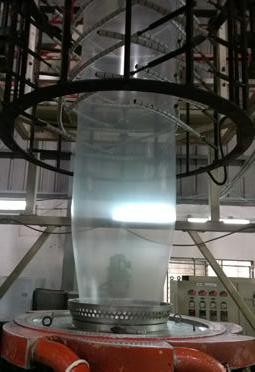
successfully managed to blow biodegradable foils out of this granulate. With that, TNO proved that the production of biodegradable foils for sanitary pads is technically feasible.
When the first sample was finalised, the main producers of plastic and sanitary pads were visited by TNO to discuss a potential collaboration. With Square Toiletries, TNO signed terms of reference (ToR) for further collaboration. Square’s brand Senora is leading the sanitary pad category in Bangladesh having 65% market share and being the leader, they have a core responsibility towards society and the environment. The goal of their collaboration is to have the company integrate the plastic in the production process of their sanitary pads. TNO shipped initial samples of plastic to Bangladesh for Square to test the feasibility. To date, Square has successfully assembled the plastic in a prototype of their biodegradable sanitary pads.
Currently the bioplastic foils are supplied by the Netherlands directly, but businesswise this is not attractive. The ambition of TNO is that the plastic will be fully sourced and produced from raw materials from Bangladesh, in Bangladesh. The incentive is to keep the price as low as possible in order to make these sanitary pads affordable for the most marginalised groups. TNO found two potential Bangladesh plastic manufacturing companies that could produce the foils locally. Square teamed up with them to arrange that these companies would purchase the bioplastic granules from Rodenburg and produce the bioplastic foils locally for Square to incorporate into their sanitary pads. Our activities in numbers: • TNO developed the first biodegradable plastic from starch that is suitable for the production of sanitary pads. • A ToR has been signed with Square Toiletries.
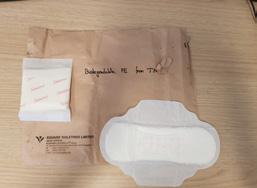
- Rolls of biodegradable foil for production of sanitary pads and its packaging -The machine that blows the biodegradable plastic - Packaging and sanitary pad made with biodegradable plastic by Square
‘The combination of social and technical innovation is key’ Mrs Mathilde Miedema, Programme Manager Innovation for Development, TNO ‘The combination of social and technical innovation was key in this project. Simavi and local partners reduced the traditional taboo on menstrual hygiene. Availability of good and affordable sanitary pads supports this transition. We made good progress in parts of Bangladesh, it will take more years to further implement this system innovation nationwide.’
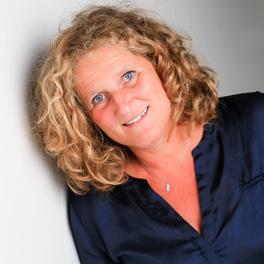
Contribution towards outcome 2
There are many steps to be taken before the biodegradable sanitary pads will be available in Bangladesh. TNO and Square are committed to continuing their collaboration beyond the
Ritu programme. Square is interested in implementing the biodegradable plastic foil in their products and is continuing the process of checking compatibility and feasibility. It could even be used for packaging. Square wants to be a pioneer in terms of innovation and plans to integrate the biodegradable plastic in their total product range. The company agreed to bear the total investment expense for commercialising the biodegradable product.
Yearly, Square would require more than 200 MT of biodegradable polymer beads for the local production of biodegradable pads in Bangladesh. Annually, around 200 million biodegradable pads can be produced from these polymer beads. This would serve around 2–4 million women per year. There is significant room for further expansion given the fact that there are around 40–50 million potential users of the pads in Bangladesh.
‘The potential of biodegradable pads is huge’ Dr Aike Wypkema, Researcher/Project Manager, TNO ‘The potential of biodegradable sanitary pads is huge in Bangladesh and Asia. It was great to transfer technical know-how in this project and to develop new products with the private sector. Products that are environmentally friendly and affordable for women with lowest incomes.’

BAN ON PLASTIC Bangladesh was the first country in the world to ban plastic bags. The ban was installed in Dhaka in 2002, to prevent these bags from clogging drains and waterways. When these fill with rainwater, they become micro breeding grounds for mosquitoes. Sanitary pads also contain plastic – a polyethylene back sheet as anti-leakage layer. Moreover, following traditional norms used pads are not thrown in a garbage dump, but buried in the ground. As plastic does not compose, it will remain in the ground for thousands of years.






